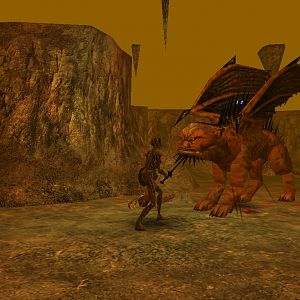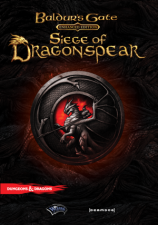-

- Forums
- Chatrooms
- Gallery
- Gameplay Videos
- Upload
- Articles
- Mod Reviews
- Shop SP: Games, Movies, Books

|
History
of Sembia
|
The land of Sembia was settled by humans coming to the Sea of Fallen Stars from the south, and was originally chosen for its stands of huge, high-quality iliyr-wood timber so prized in shipbuilding. However, as the forests were cleared over the years, the treecutters came into increasing conflict with elves who feared the loss of their entire wood. This would undoubtedly have occurred, had not the hastily gathered mercenary troops of the fledgling land been defeated by the elves at Singing Arrows (884 DR).
This battle convinced distant Chondath to abandon its holdings in the region and allow the immigrant Sembians to establish their independence (though as little more than a collection of rival city-states, much like the Moonsea or Vast of today). It also set the stage for the appearance of the Raven. The young country grew strong as farms prospered in the newly cleared lands. Craftsmen arrived from the south to take advantage of this chance to acquire land and wealth, bringing their trades with them. Rauthauvyr the Raven unified the city-states and towns in the face of the continuing "elven menace," and insisted on maintaining a standing army, which he kept in practice by policing Sembia's borders and improving its roads.
At this time (913 DR), Sembia became as a true nation. The Moonsea's (Dragon Sea's) mineral wealth was discovered by humankind at about this time, and pressure began to grow for a trade road through the elven woods to make Sembia the world's gateway to all these riches. The Raven went alone as an envoy to the Elven Court and asked the elders of their Council to approve a road open to humans linking Sembia to the shores of the Dragon Sea (an earlier road had been destroyed during the conflict and was now overgrown). Raven proposed that the elves choose the route and retain control of it and the woods around it, so that no woodcutting or human settlement would occur.
The elves had earlier made similar arrangements with the Dalesmen and had no difficulty with the concept of such an agreement. However, the inhabitants of Velarsdale (now Harrowdale) refused the proposal, not wanting or needing such a road at that time (curious, since later a ruler of Harrowdale commissioned the disastrous Halfaxe Trail). The elves, not wishing to offend long-time allies, refused Raven's request. Rebuffed, the Raven then threatened to exterminate the isolated elves in Amothoi, the last embattled remnant of the elves in Sembia, if the Elven Court did not cooperate.
If the road was built, however, they would be free to trade, or not trade, as they wished. The elves agreed under this pressure, and Sembia's financial future was secured. Hillsfar, on the shores of the Dragon Sea, became a commercial meeting ground between humankind and elves, as did Elventree. The route the elves chose ran past the base of the Standing Stone as a reminder of earlier, less-hostile dealings between humans and elves. Over the years the elves of Amothoi came north to join their brethren or slipped away to seek Evermeet, leaving their wood to gradually disappear.
Sembia grew rich under merchant leaders of increasing wisdom, such as Saer (for whom Saerb was named) and Selgar (for whom Chancelgaunt was renamed as Selgaunt). Before his death, Rauthauvyr the Raven saw that these merchants had a strong standing council of merchant elders to advise them and to ensure that no ruler could hold onto power by force of arms. Then this farsighted man, creator of a nation, now halfblind and infirm from old war wounds, rode north into the elven woods and disappeared. None know what happened to him or where his bones lie, save perhaps some few elder elves.


